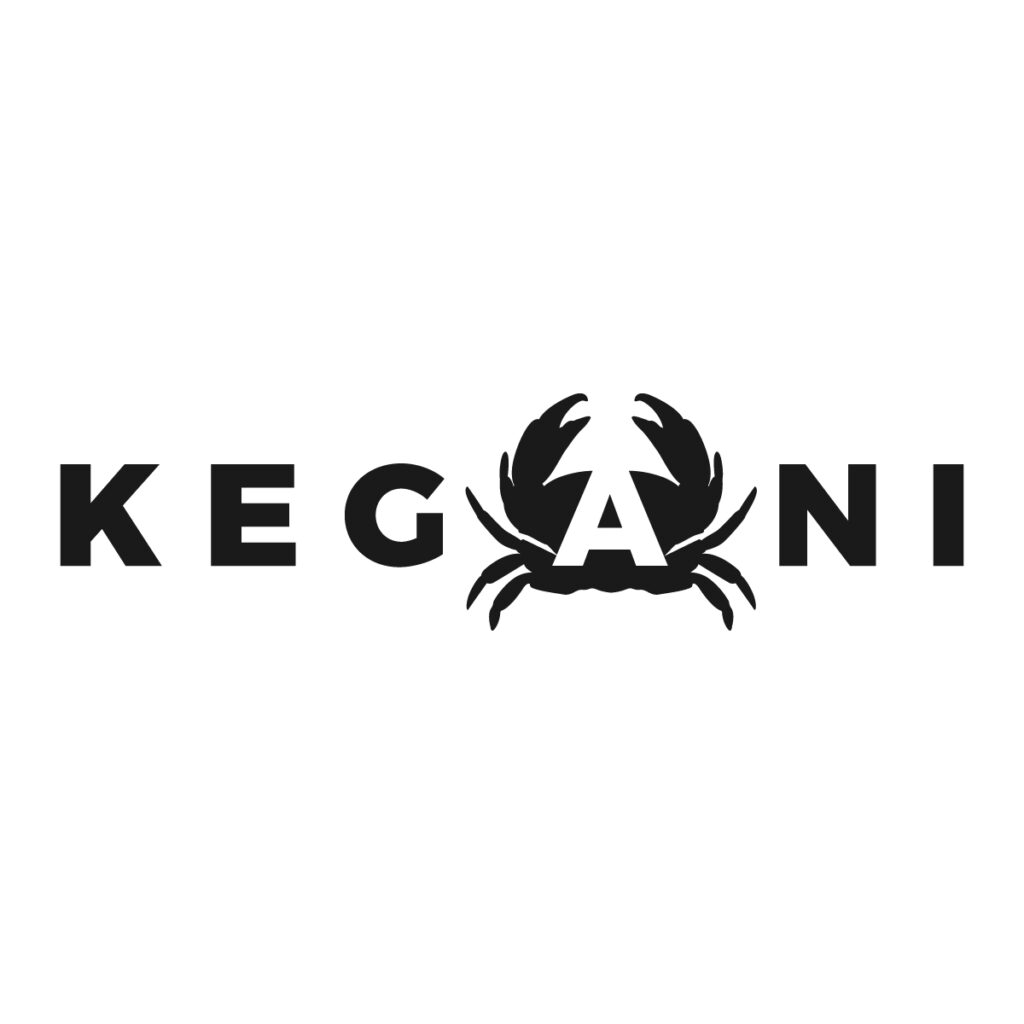X50CrMoV15, a popular steel found in many German-made kitchen knives, offers exceptional rust resistance, edge retention, and ease of sharpening. This makes it a reliable, user-friendly option for your customers.
This blog dives into its composition, performance, and compares it to popular steels, revealing why it’s a smart choice for your kitchen knife offerings. We’ll cover ideal uses and help you boost your sales with informed recommendations.
What is X50CrMoV15 Steel?
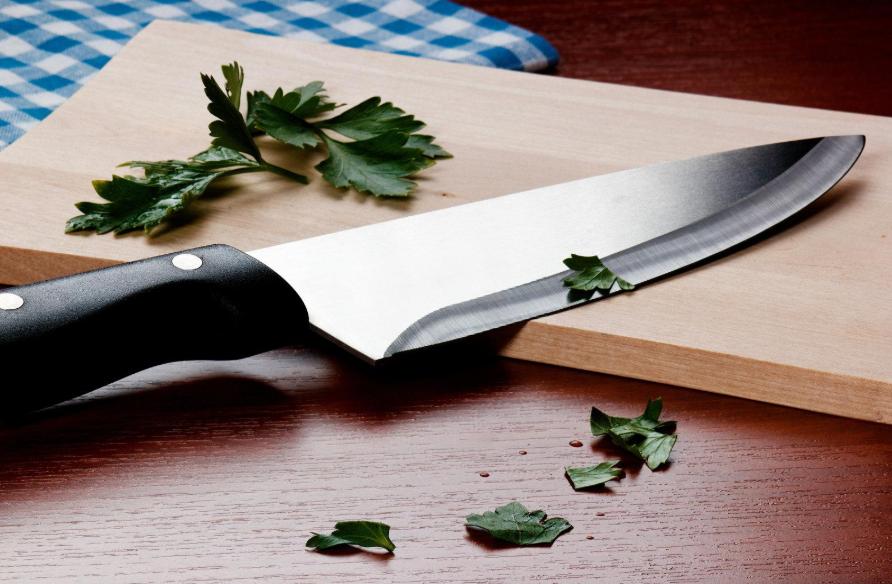
X50CrMoV15, also known as 1.4116, is a German stainless steel widely used in knife manufacturing. Its name is derived from its chemical composition, following the European steel classification system:
- The ‘X’ designates it as stainless steel, crucial for its corrosion-resistant properties.
- ’50’ indicates a carbon content of 0.50%, providing an optimal balance between hardness and toughness.
- ’15’ represents the 15% chromium content, enhancing its stainless qualities.
- ‘CrMoV’ denotes the presence of chromium, molybdenum, and vanadium, each contributing significantly to the steel’s performance.
This steel is particularly prevalent in kitchen knives. It’s renowned for its ease of sharpening and excellent corrosion resistance, making it a preferred choice among both home cooking enthusiasts and professional chefs.
When it comes to steel equivalents, 5Cr15MoV serves as the Chinese version of German X50CrMoV15 (1.4116). 4116 and 420HC are similar to X50CrMoV15. They have close chemical makeups and perform alike.
What composes X50CrMoV15 steel?
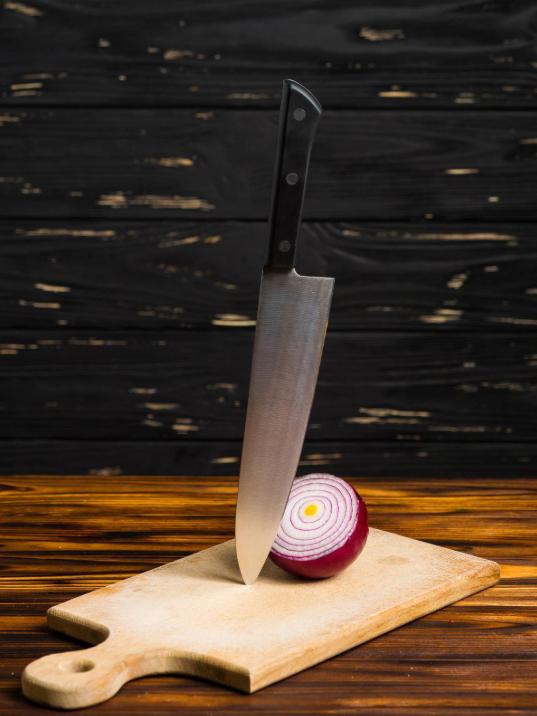
Carbon makes up about 0.5% of this steel. It typically results in a moderate hardness range of 55-57 HRC.
The biggest part of X50CrMoV15 is chromium, at 15%. This gives the steel great rust resistance. Your knife will stay shiny and clean even after lots of use.
Molybdenum and vanadium are also important. They’re only a small part of the mix, but they make the steel stronger and more wear-resistant.
Here’s a breakdown of the main elements:
| Element | Percentage |
| Carbon | 0.5% |
| Chromium | 15% |
| Molybdenum | 0.8% |
| Vanadium | 0.2% |
| Manganese | 1% |
| Silicon | 1% |
| Phosphorous | 0.04% |
| Sulfur | 0.02% |
Other elements like manganese, silicon, and phosphorus are present in small amounts. They help with the steel’s overall performance.
This mix of elements creates a good balance of hardness and toughness. Your knives will hold an edge well but won’t be too brittle.
Start Working with a Professional Now
Properties of X50CrMoV15 steel
| Characteristic | Description | Rating |
| Hardness and Edge Retention | – Ranges from 54 to 57 HRC on the Rockwell scale – Softer nature due to lower carbon content – Good balance in edge retention – Enhanced wear resistance due to molybdenum content | ★★★☆☆ |
| Corrosion Resistance | – 15% chromium content for excellent corrosion resistance – Ideal for kitchen use with exposure to moisture and acids – Safe for food preparation and easy to maintain – Appeals to home cooks and professional chefs | ★★★★☆ |
| Toughness | – Good toughness, adequate for most cooking needs – Resists chipping and breaking – Ideal for daily kitchen use – Moderate carbide content balances hardness and durability | ★★★★☆ |
| Ease of Sharpening | – Standout feature due to relatively soft nature – Can be quickly and easily sharpened at home – Doesn’t require professional sharpening equipment or skills – Great for those who like to maintain their own knives | ★★★★☆ |
X50CrMoV15 vs. other popular knife steels
X50CrMoV15 is a good all-around steel, but how does it stack up against other common knife steels? Let’s compare it to some popular options to help you choose the right steel for your knives.
X50CrMoV15 vs VG10
VG10 is a Japanese steel known for its edge retention. It’s harder than X50CrMoV15, ranging from 60-62 HRC compared to X50CrMoV15’s 55-57 HRC.
Here’s a quick comparison:
| Feature | X50CrMoV15 | VG10 |
| Hardness | 55-57 HRC | 60-62 HRC |
| Edge Retention | Good | Excellent |
| Corrosion Resistance | Very Good | Good |
| Ease of Sharpening | Easy | Moderate |
| Price | $ | $$$$ |
VG10 holds an edge longer but is more challenging to sharpen. X50CrMoV15 offers better corrosion resistance, primarily due to its lower carbon content, making it less susceptible to rust. In contrast, VG10’s high carbon content makes it more prone to corrosion if not properly maintained. However, both are considered stainless steels with good overall corrosion resistance.
X50CrMoV15 is more budget-friendly. Choose VG10 for more demanding use, and X50CrMoV15 for easier maintenance.
X50CrMoV15 vs D2 Steel
D2 is a high-carbon tool steel that’s very wear-resistant. It’s harder than X50CrMoV15, typically 60-62 HRC.
Comparison table:
| Feature | X50CrMoV15 | D2 |
| Hardness | 55-57 HRC | 60-62 HRC |
| Edge Retention | Good | Excellent |
| Corrosion Resistance | Very Good | Fair |
| Ease of Sharpening | Easy | Difficult |
| Price | $ | $$$ |
D2 keeps its edge longer but rusts easier than X50CrMoV15. X50CrMoV15 is simpler to sharpen and more corrosion-resistant. Pick D2 for heavy-duty tasks, X50CrMoV15 for everyday use and easy care.
X50CrMoV15 vs 440C
440C is a popular stainless steel with good all-around properties. It’s slightly harder than X50CrMoV15, usually 58-60 HRC.
Comparison:
| Feature | X50CrMoV15 | 440C |
| Hardness | 55-57 HRC | 58-60 HRC |
| Edge Retention | Good | Very Good |
| Corrosion Resistance | Very Good | Good |
| Ease of Sharpening | Easy | Moderate |
| Price | $ | $$ |
440C holds an edge a bit longer but is harder to sharpen. X50CrMoV15 fights rust better and costs less. Choose 440C for slightly better performance, X50CrMoV15 for easier maintenance and lower price.
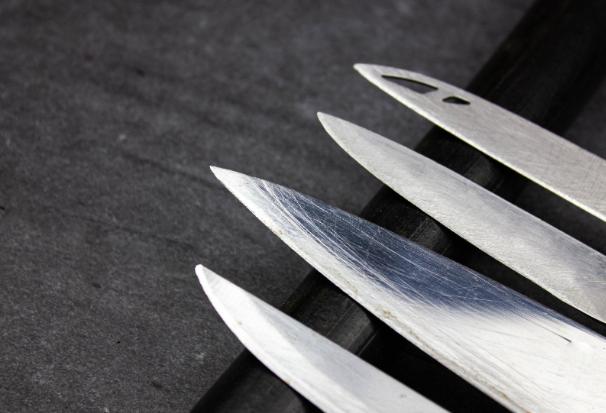
X50CrMoV15 vs AUS-8
AUS-8 is a Japanese steel similar to 440C. It’s about as hard as X50CrMoV15, typically 54-58 HRC.
Here’s how they compare:
| Feature | X50CrMoV15 | AUS8 |
| Hardness | 55-57 HRC | 54-58 HRC |
| Edge Retention | Good | Good |
| Corrosion Resistance | Very Good | Good |
| Ease of Sharpening | Easy | Easy |
| Price | $ | $ |
These steels are quite similar. X50CrMoV15 resists rust a bit better, while AUS8 might be slightly tougher. Both sharpen easily. Pick X50CrMoV15 for better corrosion resistance, AUS8 for slightly better toughness.
X50CrMoV15 vs AUS-10
AUS-10 is an upgraded version of AUS8. It’s harder than X50CrMoV15, usually 58-60 HRC.
Comparison table:
| Feature | X50CrMoV15 | AUS10 |
| Hardness | 55-57 HRC | 58-60 HRC |
| Edge Retention | Good | Very Good |
| Corrosion Resistance | Very Good | Good |
| Ease of Sharpening | Easy | Moderate |
| Price | $ | $$ |
AUS10 keeps its edge longer but is harder to sharpen. X50CrMoV15 fights rust better and costs less. Choose AUS10 for better edge retention, X50CrMoV15 for easier care and lower price.
X50CrMoV15 vs 7Cr17MoV
7Cr17MoV is a Chinese steel similar to 440A. It’s about as hard as X50CrMoV15, typically 55-57 HRC.
Here’s a comparison:
| Feature | X50CrMoV15 | 7Cr17MoV |
| Hardness | 55-57 HRC | 55-57 HRC |
| Edge Retention | Good | Fair |
| Corrosion Resistance | Very Good | Good |
| Ease of Sharpening | Easy | Very Easy |
| Price | $ | $ |
These steels are quite similar, but X50CrMoV15 performs better overall. It holds an edge longer and resists rust better. 7Cr17MoV is very easy to sharpen. Pick X50CrMoV15 for better performance, 7Cr17MoV for the easiest sharpening.
Best uses for X50CrMoV15 steel knives
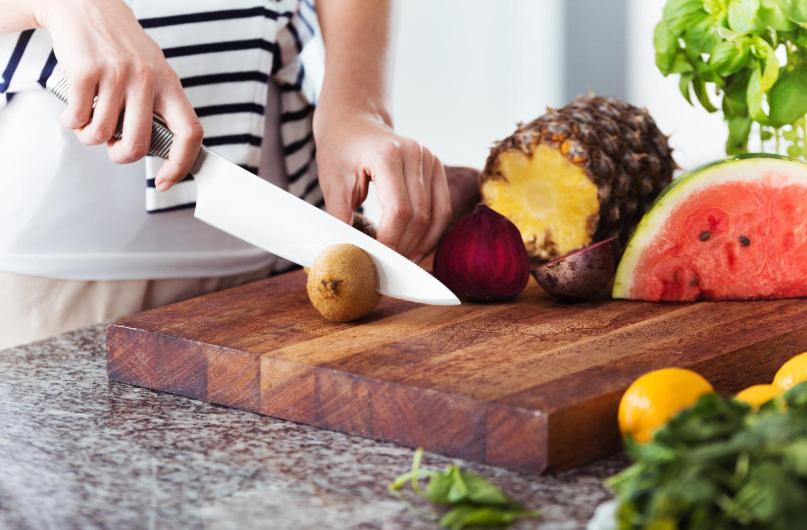
- Chopping and Slicing: X50CrMoV15 knives excel at chopping vegetables, slicing fruits, and general food preparation. Their balanced hardness allows for efficient cutting without excessive effort.
- Slicing Meats: These knives are effective for slicing cooked meats, poultry, and fish due to their sharp edges and good edge retention.
- Slicing Bread: X50CrMoV15 knives can handle slicing bread, especially softer varieties, thanks to their ability to maintain a sharp edge.
- Multi-Purpose Knives: As an all-around steel, X50CrMoV15 is suitable for various everyday kitchen tasks, making it a reliable choice for home cooks.
Limitations
While X50CrMoV15 is versatile, it is not recommended for:
- Cutting Hard Ingredients: Avoid using it on very hard materials like bones or frozen foods, as this could chip the blade.
- Heavy-Duty Tasks: For heavy-duty tasks requiring extreme durability or toughness (like butchering), other steels like D2 or high-carbon tool steels may be more appropriate.
Partner with Keganico for Your Next Knife Line
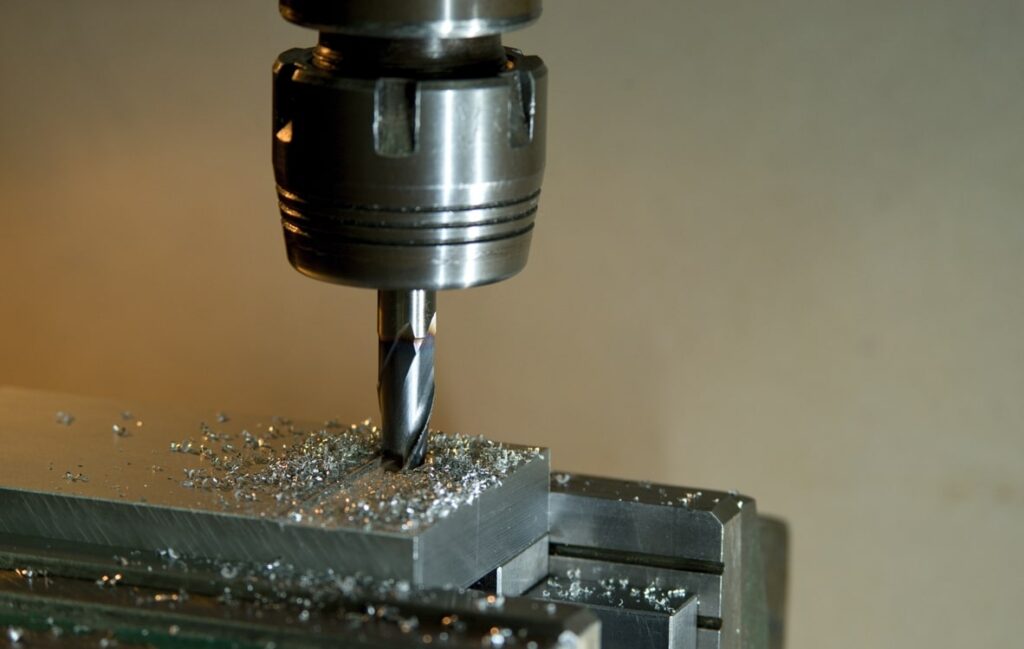
Looking for top-notch Chinese knives? Kegani has you covered. We’re experts in crafting high-quality blades that meet your exact needs.
We offer a range of services to fit your business:
• Private label knives – Put your brand on our expertly crafted blades
• OEM manufacturing – Custom designs brought to life
• Wholesale options – Stock up on quality knives at great prices
Get a free quote and see how Kegani can sharpen your business edge.
Frequently Asked Questions
How Can I Find reliable knife Manufacturers?
You can find trustworthy knife manufacturers by researching reputable brands and checking quality standards. Look for companies with good customer reviews and a history of consistent quality. Ask for samples before placing large orders.
Check our blog for more useful information:
- Top 8 Private Label Knife Manufacturers Worth Exploring
- 7 Chinese Knife Manufacturers Worth Checking Out
- A List of Active OEM Knife Manufacturers
What are some common equivalents to X50CrMoV15 in the steel market?
4116 and 420HC are similar to X50CrMoV15. They have close chemical makeups and perform alike.
